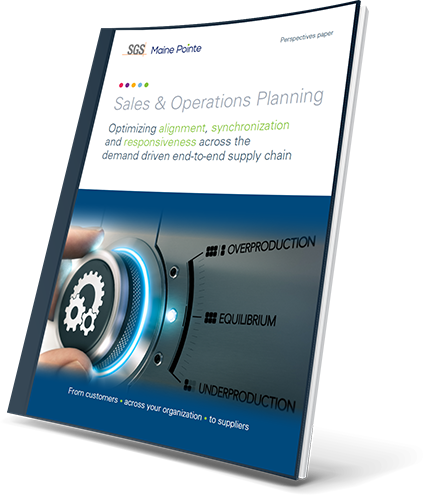How we work with you
Maine Pointe delivers compelling results

Analyze

Implement

Sustain
certification programs to enhance resilience and compliance.
Optimize alignment, synchronization, and responsiveness across the demand-driven, end-to-end supply chain and operations

Maine Pointe’s integrated business planning approach helps the organization accelerate the ability to fulfill demand balanced against supply to optimize resources by implementing a disciplined, cross-functionally aligned planning process.
Our sales, inventory & operations planning optimization approach leverages Maine Pointe’s data analytics, planning, leader and organization alignment and industry supply chain subject matter expertise.
We work with our clients to implement processes and practices that best fulfill the requirements created from demand (the demand plan). Supply planning includes the business frontend functions, procurement, manufacturing, operations, and distribution considering capacity constraints and material availability. The objective is to balance supply and demand in a manner that achieves the financial and service objectives of the organization.
We employ a cross-functional approach to implement best-in-class supply planning processes, procedures and meeting cadence, and we leverage the latest digital tools to optimize capacity, utilization production, inventory and service, supported by on-the-ground training and decision support tools.
Our approach to sales, inventory and operations planning is integrated into our end-to-end supply chain and operations transformation methodology called Total Value Optimization™.

We break through functional silos and take you to high performance
Most supply chains operate in functional silos and struggle to keep pace in today’s rapidly changing world.
Our goal?
To help you deliver the greatest value to customers and stakeholders at the lowest cost and risk to business. We call this Total Value Optimization™.







Driving measurable and sustainable change
Maine Pointe Client Testimonial Videos
The engagement generated significant measurable results, including transformational change, forward looking KPIs to predict the business, margin improvement, and value to customers and shareholders.
Brad Feldmann, CEO, Cubic
The Maine Pointe engagement helped us drive the highest level of revenue ever and drove measurable improvement in profitability through manufacturing rationalization and sourcing optimization.
Kirk Goins, CEO, Luminator Technology Group
This Maine Pointe Perspectives Paper is recommended reading for CEOs and PE executives who want to achieve S&OP excellence in their supply chain.
It covers:

Have a particular business challenge you'd like to address?
Submit this contact form to speak with one of our executives.